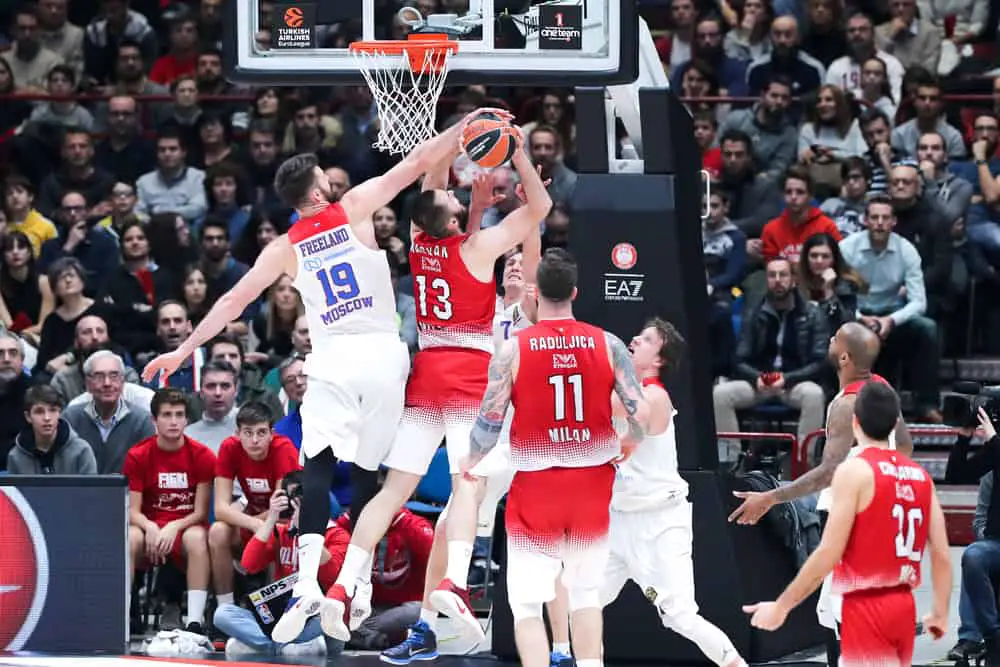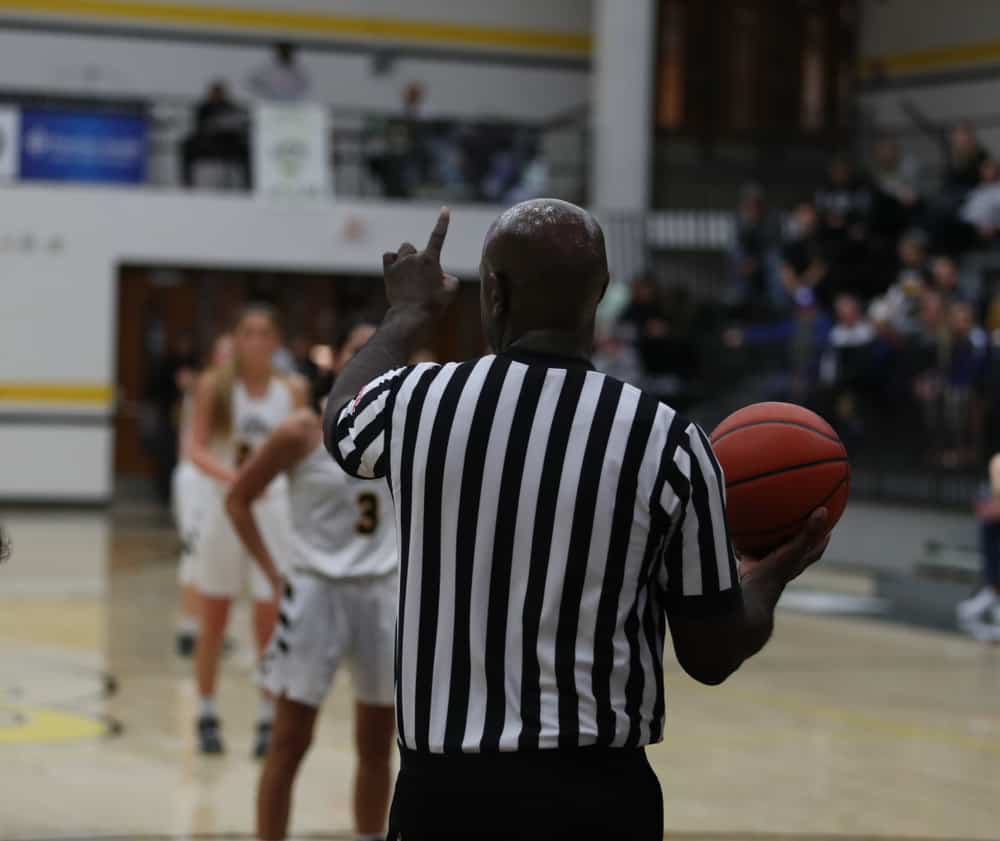What Does PF Mean In Basketball? (All You Need To Know)
Basketball is a sport that is more than a century old, but it is only now becoming widely popular in the international sporting arena. The more people get into basketball, the more questions there are regarding the sport, and anyone who is new to the game may be wondering what PF stands for in basketball.
PF in basketball can mean Personal Foul or Power Forward. The abbreviation is always used in the context of stats, where it refers to a Personal Foul, or in the context of individual players or positions, where it is used to refer to a Power Forward, which is the main scoring position on the game.
The PF abbreviation has more than one meaning in basketball, which means the context of the abbreviation is important. Let’s explore the possible meanings of PF in basketball and learn some more about the sport along the way.
What Does PF Mean In Basketball?
Anyone who is new to the sport of basketball, whether playing, spectating, or both, may come across the abbreviation PF from time to time. It is important to understand what this abbreviation means in context and how this abbreviation is used in basketball write-ups.
In the context of a basketball game, match calling, commentating, and reviews, PF in basketball stands for Power Forward.
Power Forward is an important player position in basketball and forms one of the five active player positions in the sport.
Learning the function of the Power Forward position is critical for understanding the roles of players in the sport, and understanding how the Passing Forward operates is a key element of basketball strategy.
The Power Forward is among the most critical players on a basketball team. This player is usually a powerful scorer and is able to move with great speed. The Passing Forward is usually the best scorer on the team and can score from mid and long-range.
These are versatile players that must be ready for anything on the court, and they must be able to cover the length of the court as quickly as possible. The PF must have the strength to defend against larger players close to the basket. They must have the ability to score consistent three-pointers and great rebound skills.
The Passing Forward must also have a high basketball IQ and understand how to play as a team member. These players must be hyper-aware of the game and understand how to capitalize on any situation. The PF must also be a great passer, particularly from high or low post action.
Every good basketball team needs a good Passing Forward to function well, and a great PF is usually the most prolific scorer on a team.
Why Is The Power Forward Position Important?
The PF, or Passing Forward, is among the most critical positions on any basketball team, but what makes this position stand out from the other four main active player positions?
The truth is that every basketball player on a team must be versatile, and every player fulfills multiple roles during a game. Modern basketball players are not limited to one position, and the best teams have players that can fulfill every role on the court, regardless of their preferred styles o strengths.
This means that it can be difficult to understand the importance of a particular position such as Passing Forward. Why is the PF position important?
The Power Forward position in basketball is important because this player is required to be as versatile as possible, and this player is usually the best scorer on the team. Playing in the PF position allows this player the most opportunity to score points and keeps them in the right place to take the best advantage of the game.
A PF with a high basketball IQ is almost unstoppable on the court, and the greatest Passing Forwards are feared by the other team as they are such tactical, powerful, proficient, and effective players.
This position is also important for a strong defense, ball control, and possession, as well as quick tactical moves and plays. It is impossible to create a flawless basketball strategy without an excellent PF, and the teams that make the best use of this position are teams that perform the best on the court.
A significant aspect of basketball is the strength and skill of the players used in an effective strategy that accounts for the individual attributes of each player on the team. Using the skills of a good PF can mean the difference between great success and failure in basketball.
What Are The Other Player Positions In Basketball?
We have learned much about the PF or Passing Forward in basketball, but this is only one of five main positions used in the sport. Every team has five active players on the court at all times, and each player is tasked with fulfilling a specific position while also being as versatile and active in the game as possible.
The five basketball court positions are:
- Point Guard
- Shooting Guard
- Small Forward
- Power Forward
- Center
Every position in basketball has a unique and specialized role in the game. Each one of these players must be highly versatile and able to adapt to any situation in the sport to take full advantage of what is happening, but each player must keep their position in mind to play the most effective strategy.
When every player on the team plays their position well and fulfills their role in the game strategy, there is almost nothing that can get between them and winning the game. A Strong team of players with a good understanding of what they are on the court to do is a team that is very likely to win.

What Does PF Mean In Basketball Statistics?
We have learned that PF is a basketball abbreviation that is often used to refer to a Passing Forward, but we also know that PF has more than one meaning in the sport. The other meaning of PF in basketball is usually used in game or tournament statistics.
PF in basketball stats means Personal Foul. A Personal Foul is a basketball term used when a single player commits an offense during the game.
There are various offenses in basketball that are considered personal fouls, but every personal foul results in some form of penalty, depending on how flagrant the offense is, how severe the offense is, and how many previous offenses the player has committed.
Personal Fouls in basketball usually occur in the following instances:
- Charging
- Blocking
- Illegal Screening
- Setting a moving pick
- Flopping
- Contact between players not involving the ball carrier
- Pushing
- Holding
- Illegal use of hands
- Illegal use of elbows
- Hand-checking
- Illegal use of knees
- Illegal use of legs
- Attempting to dribble past a player where there is not enough space to do so.
Personal Fouls are often used by players as a strategy, as no player wants to incur a foul, so some players may put themselves in a defensive position that will force the opposing player to change their strategy or commit a foul, resulting in a loss of ball possession.
When PF is referred to in basketball statistics, it usually is the number of Personal Fouls that a particular player has committed in the game, tournament, season, or in their career.
What Are The Consequences For A Personal Foul In Basketball?
Personal Fouls in basketball are the most common offense in the game. These fouls can be incurred for a wide number of reasons, many of which are common basketball accidents.
The referees of the game usually determine the severity of the foul, the conduction of the foul, and the penalty awarded for the foul during the game.
The usual consequence for a PF is a free throw is awarded to the opposing player, and ball possession is then retained by that player’s team. These free throws are usually worth one point.
The number of free throws awarded to the opposing team as a result of Personal fouls is dependent on the type of Personal Foul that was committed. Up to three free throws can be awarded to the opposing team, with each throw being worth one point.
The individual Personal Fouls committed by each player count toward a Team Foul. A Team Foul occurs if the team incurs five Personal Fouls or two Personal Fouls within two minutes. These fouls add up to a Team Foul that counts toward penalty situations.
If any player commits five Personal Fouls during the game, that player is ejected from the game and is not permitted to return to the game at any point. Being ejected from the game is the most severe penalty an individual player can incur during a game of basketball.
The overall penalty for a Personal Foul is ultimately determined by the referees of the game, and the severity of the penalty is judged based on the individual circumstance of the foul.
Conclusion
The abbreviation PF in basketball has two main meanings. PF can mean Personal Foul when referring to game rules or basketball statistics, or it can refer to Power Forward when referring to gameplay or individual players and positions.
Understanding the abbreviation and the context in which it is used is critical to understanding the game and following what is happening within a game and the overall season tournament.
References
- https://www.rookieroad.com/basketball/statistics/
- https://www.myactivesg.com/sports/basketball/how-to-play/basketball-rules/basketball-positions-and-roles
- https://en.wikipedia.org/wiki/Basketball_positions
- https://en.wikipedia.org/wiki/Personal_foul_(basketball)
- https://www.rookieroad.com/basketball/fouls/personal/







